Hello Steemit students!👋🏼
I'm so glad to retake the Crypto Academy course after the break time in the blockchain platform and I'm ready to start with the homework from @sapwood. So, here we are my post based in the exchanger platform I'm using right now: Binance.
## Setting up the exchange niche in P2P market
First of all, once you're a Binance user with an active account, you can reach the P2P option from main menu in order to see the following capture. Over here is displayed the previously transferred amount to operate in this market, the available assets to trade with Fiat and of course the trading option itself, plus Send and Receive buttons that are now new on this section, which are making easier the process with just few particulars to fill.
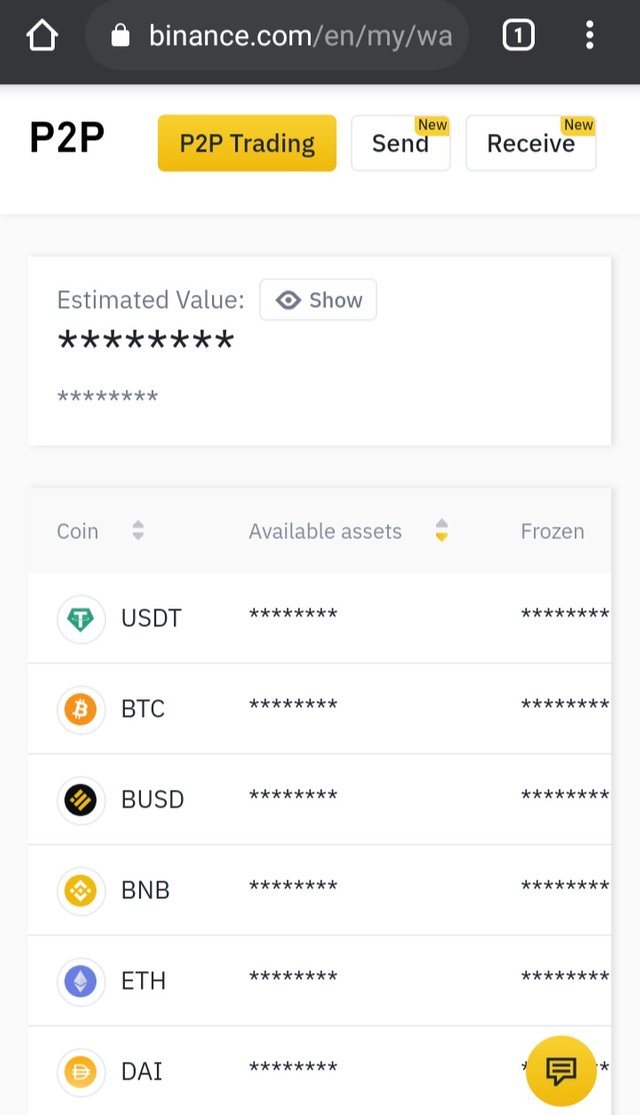
By displaying the menu, you're having several buttons like Payment settings or Post new Ad. At the first one for instance, you can choose your payment method for any trading in P2P with details like full name of receiver and bank, ID and phone number. The other is for creating of offers on the P2P area.
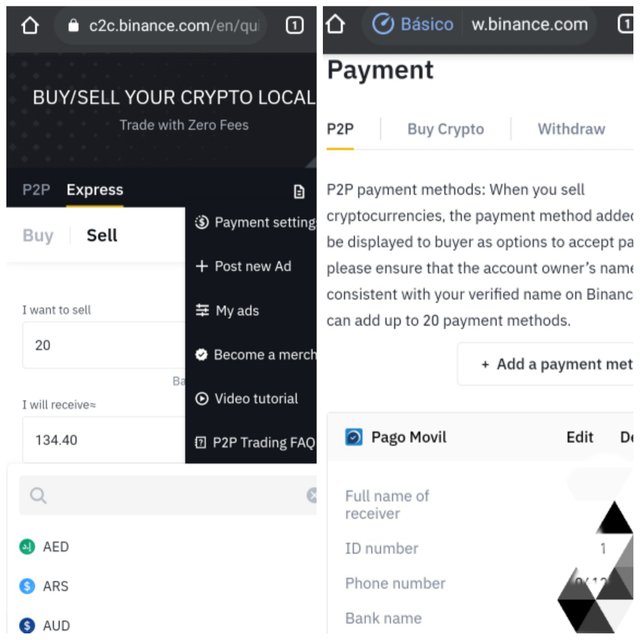
Over here you're having the possibility of setting the asset vs cash option, moreover the desired price with the reference of lowest order price provided by the current market, no matter if you want to buy or sell. And the type of price where in the floating option, you can set the price margin and see the final result according to the proposed formula.

As you previously saw in the uploaded pictures, there are the two obvious options that you can find in any p2p space. If you choose buy or sell, both interfaces are offering the possibility to choose merchant/buyer with the correspondent reputation (based on number of successful orders from the total he managed), established price range, available amount and payment method.
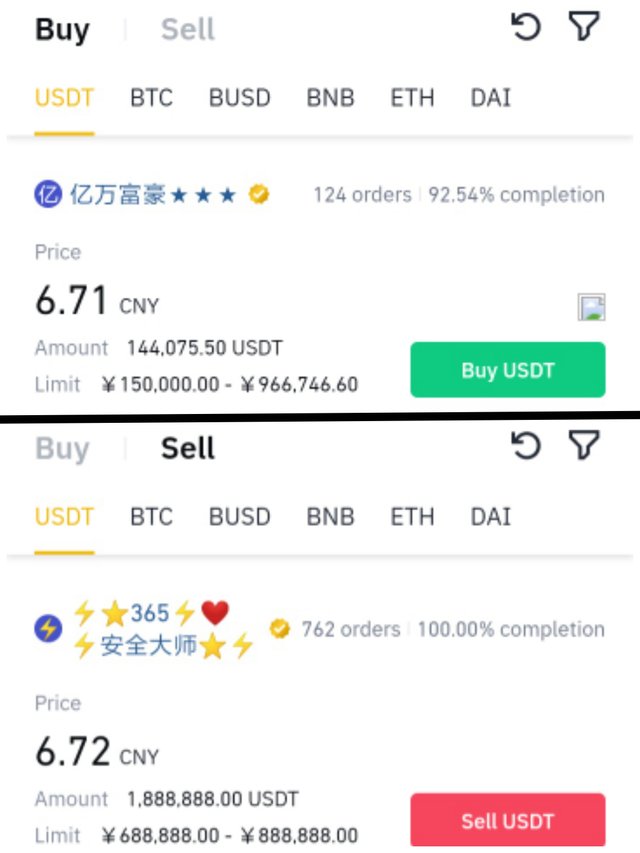
By using the funnel button, you can filter easy and quickly the online prospects with desired fiat to exchange with popular cryptoassets like USDT, BTC, BUSD, BNB, ETH or DAI. In this case for instance, I've chosen VES, the currency of my country.
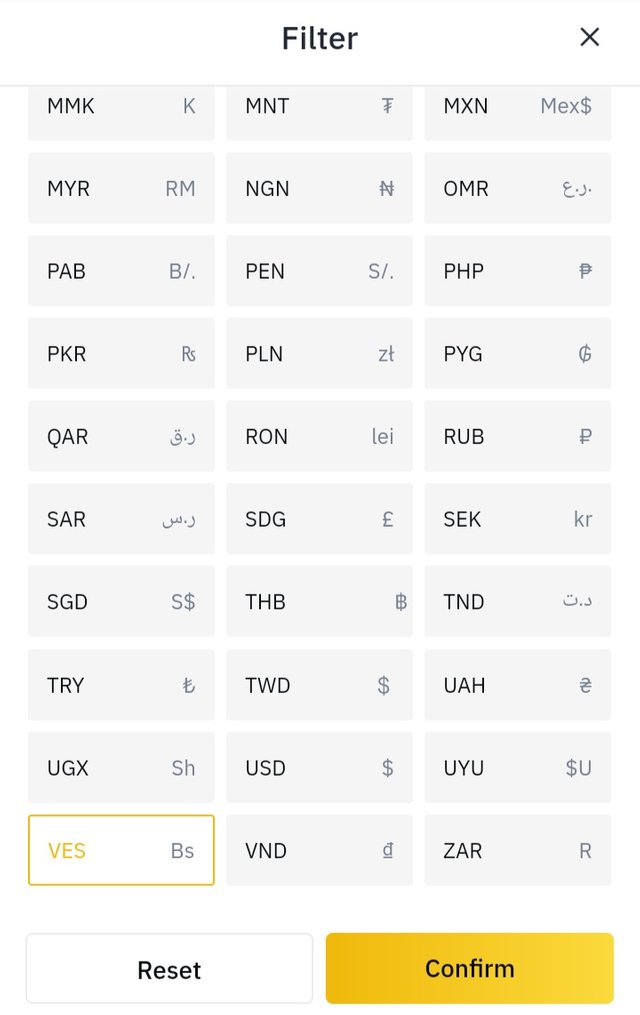
Once you're ready with the requirements for peer to peer transaction, just make a click on the correspondent option (buy or sell). For a particular demonstration, I happen to make my first P2P transaction last year, when the PayPal method was available for USD Fiat currency with a certain user called Gustaf in Binance p2p. Because he already had a WhatsApp address published in his merchant profile, I decided to make a previous contact with him over there to ensure he's online and then, make the transaction faster with no issue. That's the better decision before to set a p2p trade because you're generally contacting with strange people. So, pay special attention to the verified badge and number of successful orders. The more the better for logic.
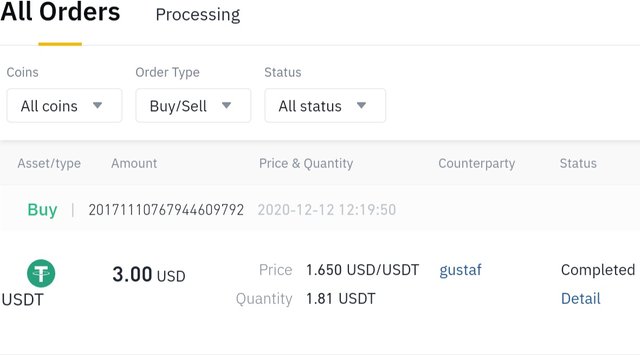
Next, once you opened an order, you'll see the established price and time to carry out the trade by him, his percentage of completion of orders (which is better) and of course the payment methods he's accepting, like PayPal, Skrill and Uphold (USD Fiat) to get the USDT assets he's offering.
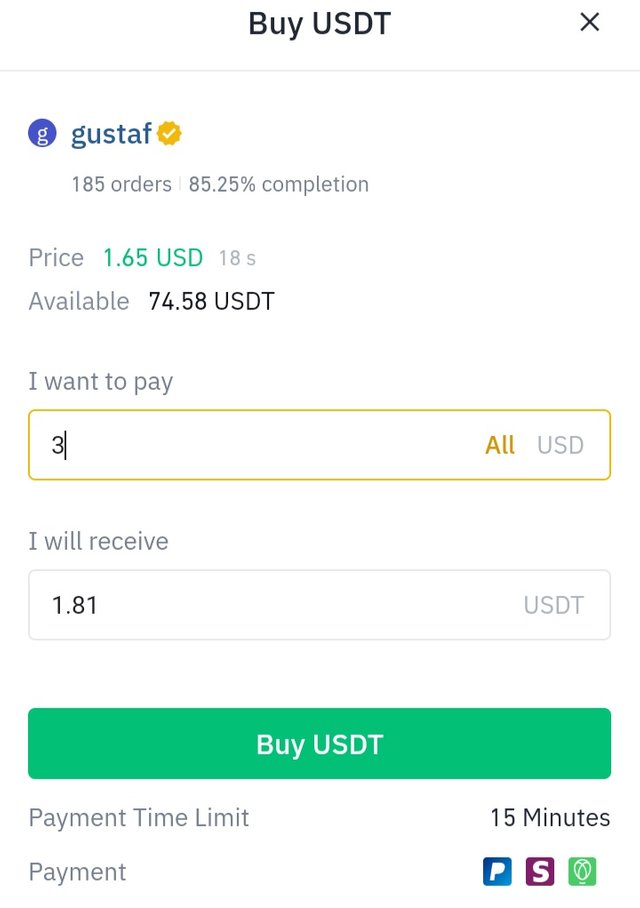
Through the process you can chat live with the person meanwhile I had to make the transference to his PayPal account details that Binance showed me as method I've chosen, for three dollars as minimum he was requiring in his offer and I had to send to him and then obtain 1.81 USDT. It's also possible to copy the number of the order to track the process in case something goes wrong. But thanks to God I had such success with him. Of course, I've been cautious for selecting him.
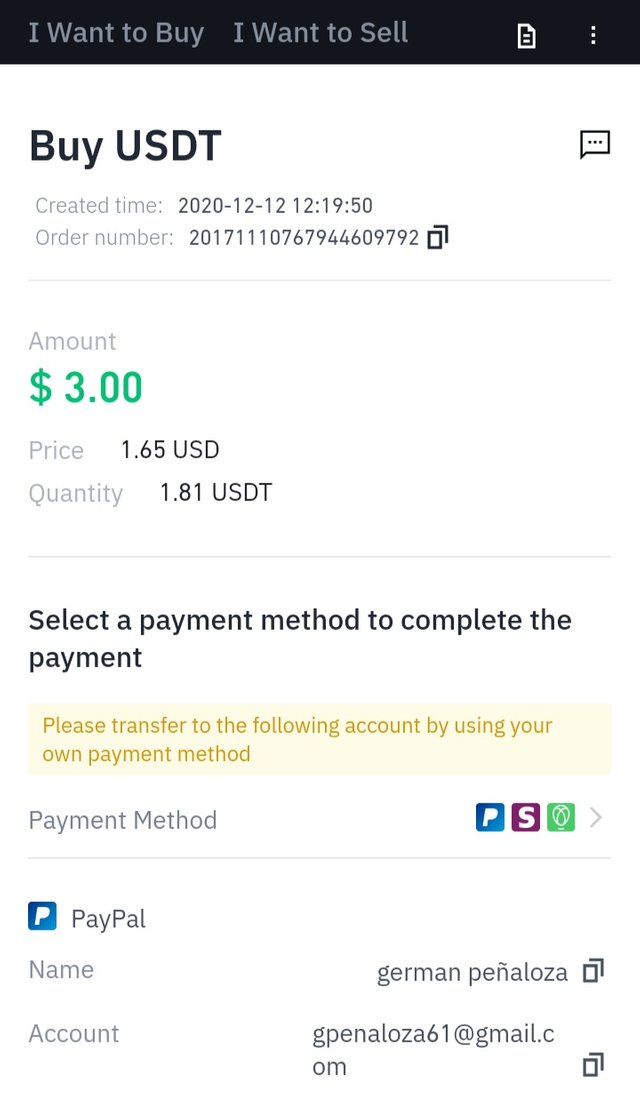
This is an interesting aspect because how delicate it is regarding to the Fiat money, where the third part is providing the guarantee of a secured transaction by locking the funds of one part until the other completes all the process. This is, for the example of a buyer, he can't withdraw the seller's funds until he demonstrate he made everything through a real proof, like an screenshot provided for the bank he's managing. For more details about this topic, you can check the articles prepared by the Binance Academy Team.
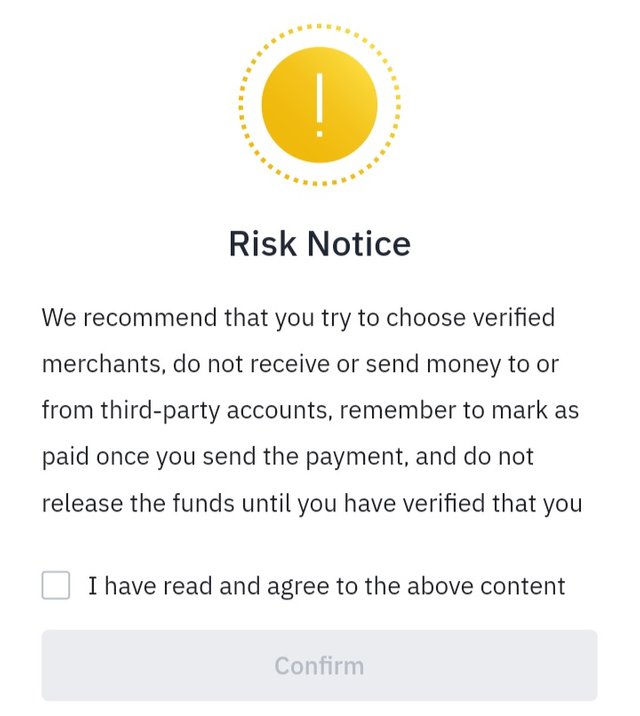
Right now there's a lot of Fiat currencies where is possible to exchange with crypto assets, like AED, ARS, AUD, BDT, BHD, BOB, BRL, CAD, CLP, CNY, COP, CRC, CZK, DZD, EGP, EUR, GBP, GEL, GHS, HKD, IDR, INR, JPY, KES, KHR, KRW, KWD, KZT, LAK, LBP, LKR, MAD, MMK, MNT, MXN, MYR, NGN, OMR, PAB, PEN, PHP, PKR, PLN, PYG, QAR, RON, RUB, SAR, SDG, SEK, SGD, THB, TND, TRY, TWD, UAH, UGX, USD, UYU, VES, VND, ZAR. Services that manage with dollars like Zelle, Uphold or Skrill for instance (and others, moreover of several national banks from different countries), are the most popular and reliable for making the exchange with a person through the platform. All depends the local regional with detailed aspects.
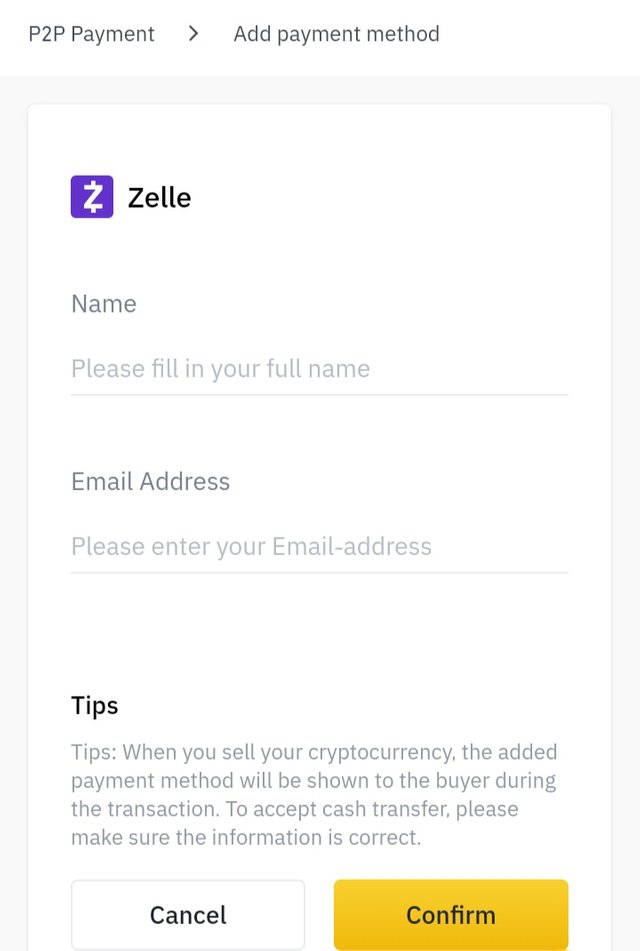
I almost forget to mention the important thing about fees in the P2P trading in Binance and that is there's no one when you trade directly with other people by obtaining crypto assets. That's pretty good taking in consideration we're exchanging with Fiat money. Much better is the fact about a good knowledge related to the nature of different networks that allows you to save at least $19 by transferring your USDT assets through the TRX network instead of using the ETH one, which is common to spend high prices on fees for just using this blockchain. Just take a quick look on the following screenshot and you'll be realizing on what I'm talking about.
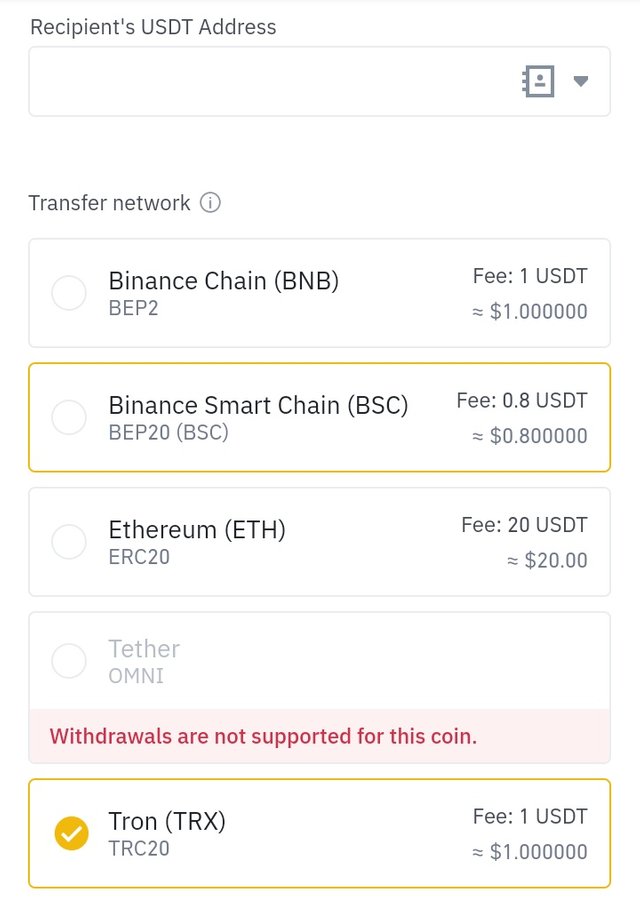
This is what I've done as task in this first occasion for week number nine, hoping I've covered properly with all points. So, happy weekend then. Regards.
P.D: all screenshots, links and mentioned documents belongs to the Binance platform.